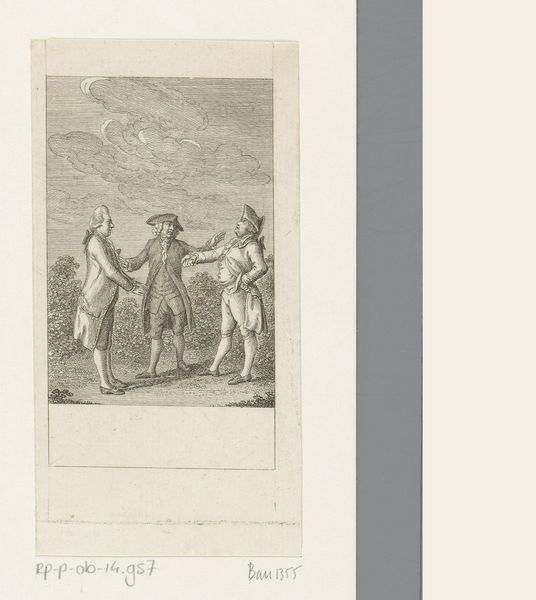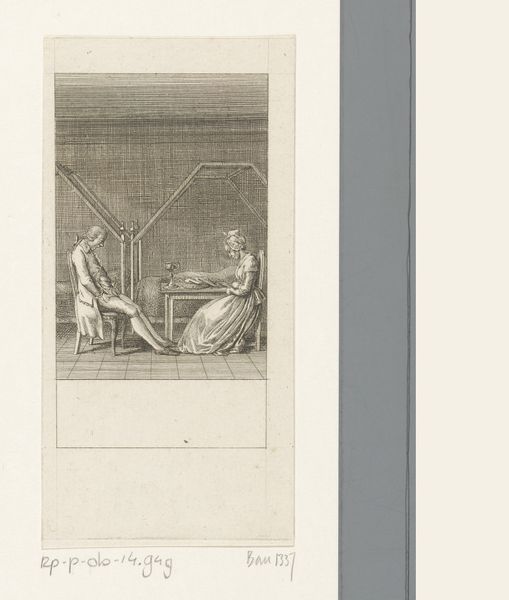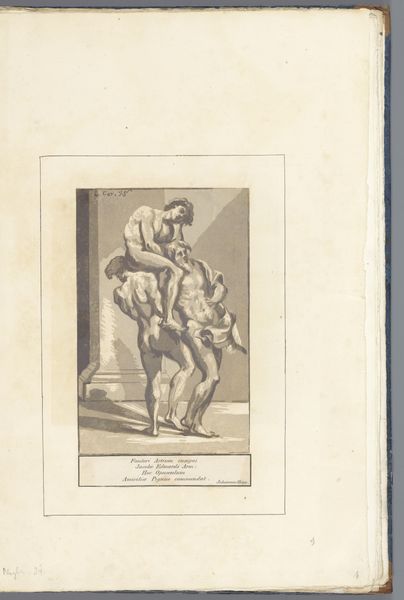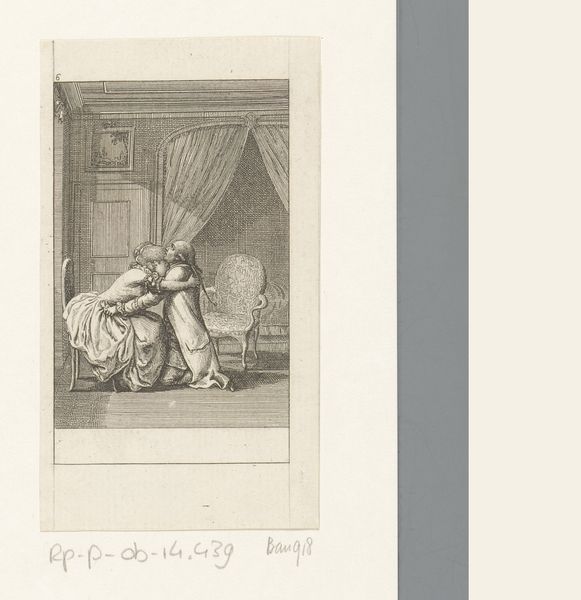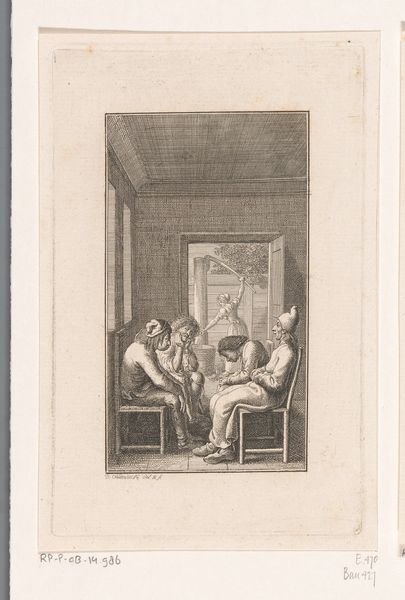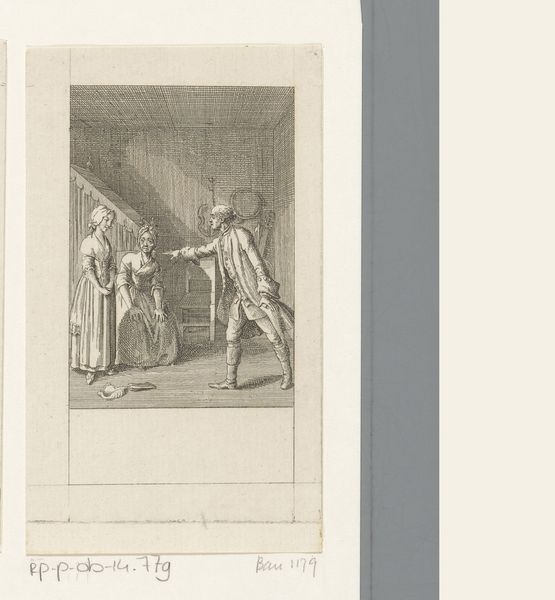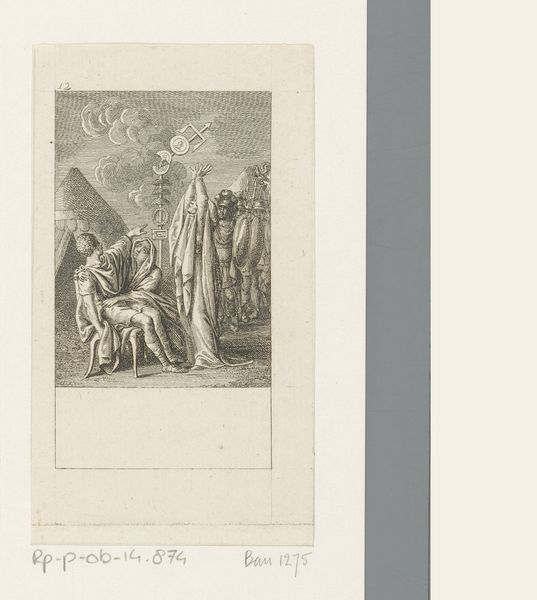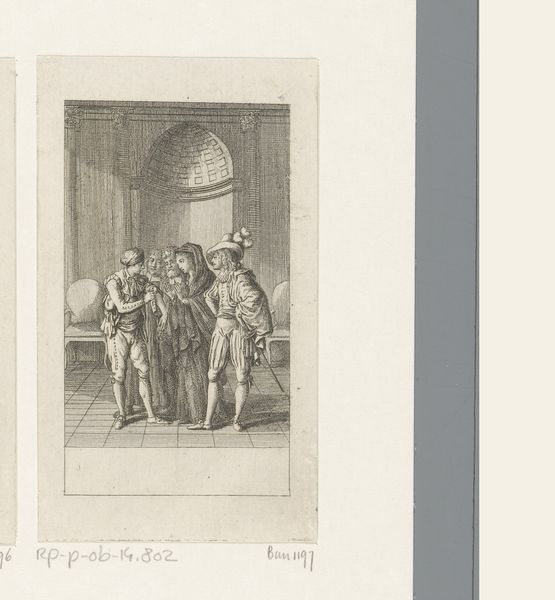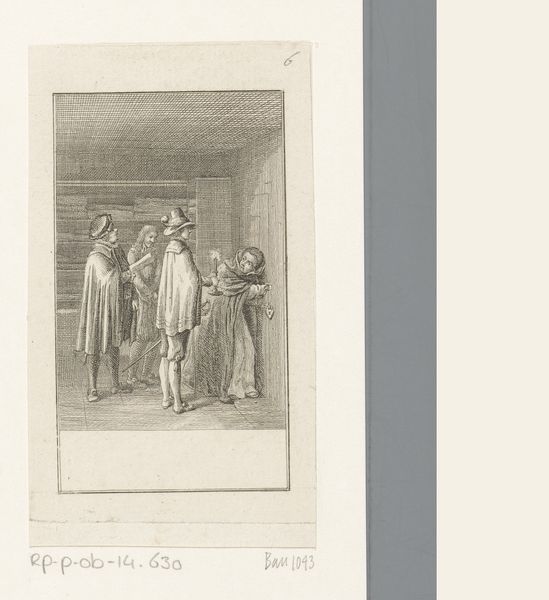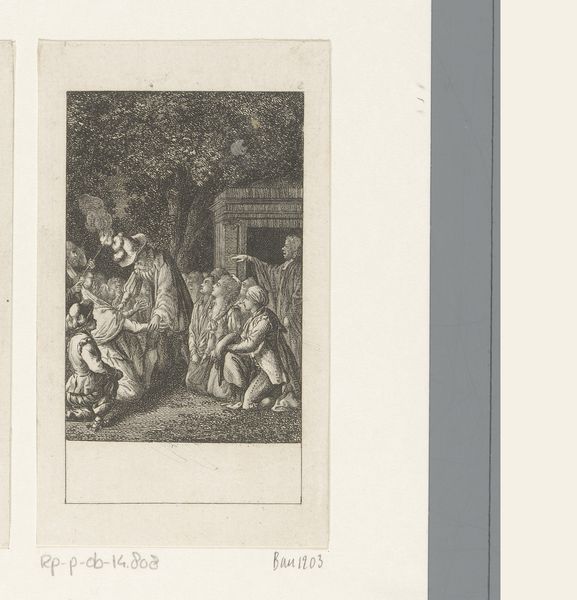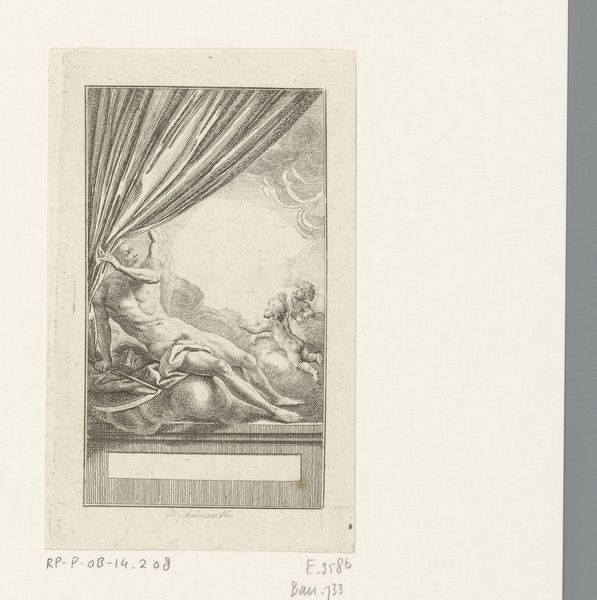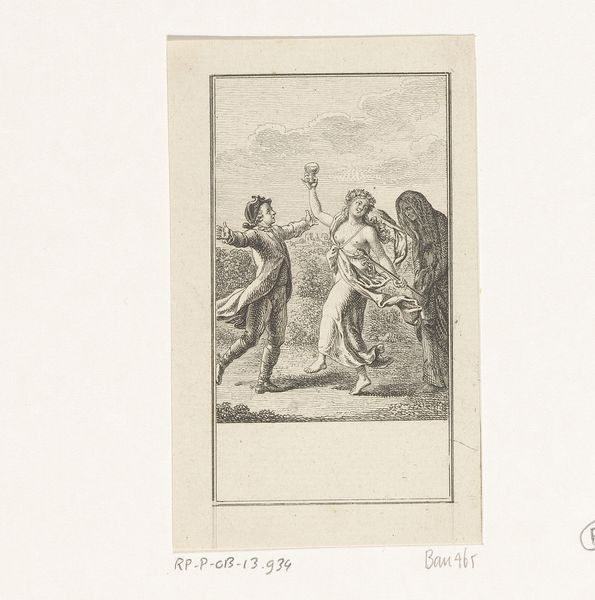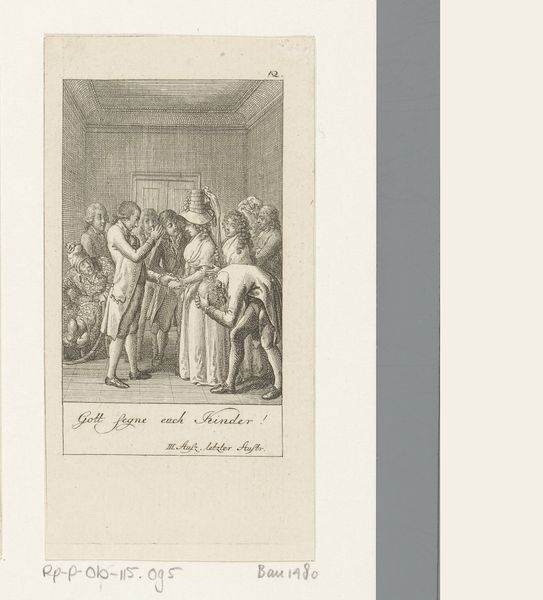
Dimensions: height 122 mm, width 61 mm
Copyright: Rijks Museum: Open Domain
Curator: Oh, it's all a bit grim, isn't it? I mean, is it just me, or does that room feel colder than a tax collector's heart? Editor: Indeed. This piece, titled "Wanhoop in het huwelijk," or "Despair in Marriage," was completed around 1788 by Daniel Nikolaus Chodowiecki. The Rijksmuseum houses it currently. It is rendered using ink on paper, and appears to be an engraving. It's part of a larger genre, you might say, of narrative prints. Curator: Right, the despair. It’s palpable! Look at the poor woman; she’s clinging to the child as if it’s a life raft, and he's practically fleeing! There is an awkwardness that feels deliberate. Is he being called to duty, or just running away from diaper duty? Editor: Haha, quite possibly! The print comes from an era rife with social commentary, and anxieties regarding marital bonds. Consider the context: the rising merchant class, new ideas about personal freedom, all clashing with traditional roles. Prints like this acted as mirrors, often distorted, reflecting societal worries and norms. It's difficult to imagine a museum or private collection that could afford to completely disregard these things when seeking to depict that specific slice of culture. Curator: Absolutely. It’s a tiny soap opera playing out. But Chodowiecki does it so skillfully! I wonder if that man would realize someday what he was leaving behind, beyond just familial attachment? The drawing has such an uncanny capacity to make us feel both distanced and intimately aware of their circumstances. Editor: Certainly. Its seeming simplicity hides deeper currents. While it does appear a romantic print, note its sharp social critique regarding duty versus desire. The seemingly humble domestic interior gains significance by symbolizing society and its shifting dynamics. A society which consumes the print voraciously, shapes taste. Curator: Thinking about it now, it’s really more of a haunting than anything else. Not ghostly, but emotionally—a chill lingering. Editor: A chill we can, even centuries later, still feel and, perhaps, understand.
Comments
No comments
Be the first to comment and join the conversation on the ultimate creative platform.
